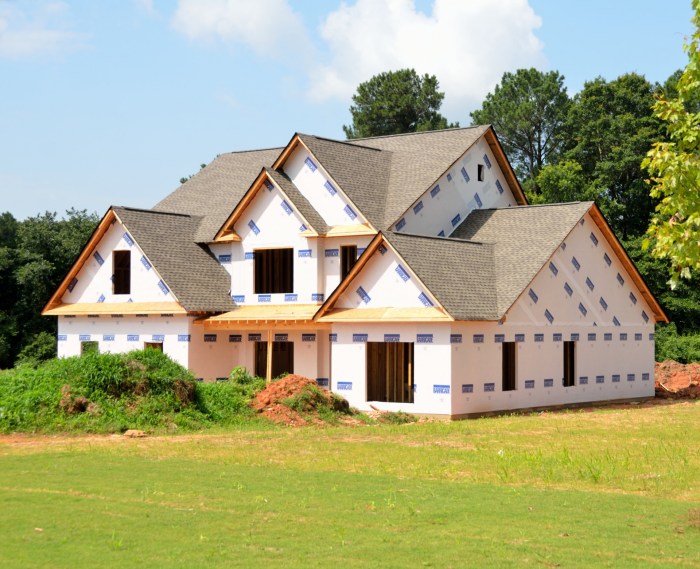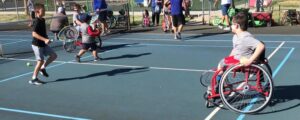
Home dojo setup tips introduces you to an exciting journey of transforming your space into a martial arts haven. Whether you’re a seasoned practitioner or a novice looking to explore the world of martial arts, setting up a home dojo can enhance your training experience significantly.
This guide covers the essentials, from the equipment you’ll need to the ideal layout and safety measures to consider. With a well-organized training area tailored to your chosen discipline, you’ll be ready to hone your skills in the comfort of your own home.
Home Dojo Setup Basics

Creating a home dojo can be an exciting venture for martial arts enthusiasts. With the right setup, you can train effectively and comfortably in your own space. Understanding the essentials of equipment, space requirements, and organization is vital for maximizing your training experience.The first step in establishing a functional home dojo is identifying the essential equipment that will cater to your chosen martial art.
Different disciplines may require specific tools, but there are some common items that can enhance your training area.
Essential Equipment for a Home Dojo
Selecting the right equipment is crucial for effective training. Depending on your martial art, you may need various tools, including:
- Mats: Soft, durable mats provide cushioning and prevent injuries, making them a fundamental component for any dojo.
- Heavy Bags: Ideal for striking arts such as boxing or kickboxing, heavy bags help improve power and technique.
- Focus Mitts and Pads: Perfect for practicing strikes and combinations, these are especially useful for solo training sessions.
- Weapons (if applicable): For arts like Kendo or Filipino Martial Arts, having practice weapons can be essential.
- Mirrors: A mirror allows you to check your form and technique while practicing.
Space Requirements for a Functional Dojo
The ideal space for your dojo should accommodate various movements and techniques. Generally, a minimum of 100 square feet is recommended to allow for comfortable training. Consider the following factors when assessing your space:
- Flooring: A flat, non-slip surface is critical. Hardwood floors, rubber mats, or interlocking foam tiles are popular options.
- Ceiling Height: Ensure there’s sufficient height, particularly for activities that involve jumping or high kicks.
- Ventilation: Good airflow is necessary to keep the training area comfortable and reduce humidity.
- Lighting: Adequate lighting helps to maintain focus and can enhance the overall atmosphere of the dojo.
Organizing the Training Area for Different Martial Arts Disciplines
Creating an organized environment is essential for effective training. Different martial arts may require distinct setups. Here are some tips on how to arrange your dojo:
- Designate Zones: Create specific areas for striking, grappling, and weapon training, which can help focus your sessions.
- Storage Solutions: Use shelves or storage bins to keep equipment organized and easily accessible, minimizing clutter.
- Practice Space: Ensure that the training area is clear of obstacles to avoid injuries. Leave enough room for movement and practicing techniques.
- Decor and Motivation: Adding inspirational quotes or images related to your martial arts can enhance motivation and create a positive training atmosphere.
“A well-organized dojo not only enhances training but also creates a conducive environment for growth and discipline.”
Safety and Regulations
Creating a home dojo is an exciting endeavor, but ensuring safety and adherence to regulations is crucial. Practicing martial arts at home can come with its own set of challenges, particularly regarding safety measures and legal considerations. This section will provide insights into implementing effective safety protocols and understanding relevant laws, ensuring a secure and compliant training environment.
Safety Measures for Home Dojo Setup
Implementing proper safety measures is essential in a home dojo to minimize risks and ensure a secure training atmosphere. The following practices should be considered:
- Flooring: Invest in padded mats designed for martial arts to cushion falls and provide traction. This helps prevent injuries during training sessions.
- Lighting: Ensure the dojo is well-lit to avoid accidents. Natural light is ideal, but bright, adjustable lighting can help create a safer environment.
- Clear Space: Maintain a clutter-free area by removing obstacles that could lead to trips and falls, such as furniture or loose equipment.
- Protective Gear: Always wear appropriate protective gear, such as gloves, shin guards, and headgear, to reduce the risk of injury during sparring or drills.
- Emergency Plan: Have a plan in place for emergencies, including first-aid supplies and a clear understanding of how to respond to injuries.
Local Laws and Regulations
Understanding local laws and regulations regarding practicing martial arts at home is important to avoid legal issues. Different areas may have specific rules that impact how and where martial arts can be practiced. Consider the following:
- Zoning Laws: Check local zoning laws to ensure that practicing martial arts is permitted in residential areas. Some neighborhoods have restrictions that may limit noise or the number of participants.
- Noise Ordinances: Be mindful of noise levels, particularly if practicing striking arts. Excessive noise may lead to complaints from neighbors and potential legal repercussions.
- Insurance Requirements: In some cases, liability insurance may be advisable, especially if you plan to invite others to train with you in your dojo.
- Age Restrictions: Be aware of any age-related regulations concerning training minors, as parental consent may be necessary.
Creating a Safe Training Environment
A safe training environment is vital for all martial artists, regardless of their sport. Here are key aspects to consider when creating such an environment:
- Proper Supervision: If training with children or beginners, ensure that a knowledgeable adult supervises to provide guidance and prevent unsafe practices.
- Safe Equipment: Regularly inspect all equipment, such as pads and bags, for wear and tear. Replace any damaged items to maintain a safe training space.
- Technique Focus: Emphasize the importance of proper technique to prevent injuries. Training should prioritize skill development while ensuring safety.
- Personal Limits: Encourage practitioners to listen to their bodies and understand personal limits. Overtraining can lead to injuries, so pacing is essential.
Enhancing Training Experience
Creating an enriching home dojo experience goes beyond having the right gear and space. It involves integrating various elements that stimulate engagement and effectiveness in training. By considering technology, flooring, and the dynamics of training alone versus in a group setting, you can significantly enhance your martial arts practice at home.
Incorporating Technology into Home Training
Utilizing technology can greatly enhance your training sessions by providing access to a wealth of resources and feedback mechanisms. Here are some strategies to consider:
- Online Classes and Tutorials: Many experienced martial artists offer online classes that can guide you through techniques and forms, allowing you to learn at your own pace.
- Fitness Apps: Apps that track your workouts, provide timers, or suggest routines can help you maintain a structured training schedule.
- Video Playback: Recording your sessions and reviewing the footage can help you identify areas for improvement in your technique.
- Virtual Reality (VR): For a more immersive experience, VR training programs can simulate sparring scenarios, enabling you to practice techniques against virtual opponents.
Importance of Proper Flooring and Padding
Having the right flooring and padding is essential for different martial arts as it can prevent injuries and enhance performance. For various styles, specific flooring solutions serve distinct purposes:
- Tatami Mats: Ideal for Judo and Brazilian Jiu-Jitsu, these mats provide a firm surface with cushioning, reducing impact during falls.
- Foam Mats: Suitable for Karate and Taekwondo, foam mats offer a softer landing, which is beneficial for high-impact kicks and jumps.
- Wooden Floors: Perfect for traditional martial arts like Kung Fu, wooden floors allow for smooth footwork and stability, making them preferable for forms practice.
- Interlocking Mats: Versatile and easy to install, these can be adapted to various martial arts and are often used in home dojos for their convenience.
Training Alone Versus in a Group Setting
Both training alone and in a group setting offer unique benefits that can cater to different training styles and goals. Understanding these can help you maximize your practice:
- Training Alone: This allows for a personalized pace, focused practice on weak points, and the freedom to explore techniques without pressure. It can be particularly beneficial for self-discipline and mindset development.
- Training in a Group: Group sessions foster camaraderie and motivation, provide immediate feedback from peers, and simulate real sparring experiences, enhancing adaptability and response times during practice.
- Hybrid Approach: Combining solo and group training yields a balanced skill set; you can focus on personal goals during solo sessions while benefiting from the energy and feedback of group training.
“Whether alone or with others, the key to effective training is consistency and engagement in your practice.”
Final Conclusion

In conclusion, establishing a home dojo is not just about having the right equipment; it’s about creating a space that inspires and motivates you. By considering safety, organization, and innovative training techniques, you can elevate your martial arts practice and enjoy the journey ahead. Happy training!
Quick FAQs
What is the best flooring for a home dojo?
Foam mats or tatami mats are often recommended for their cushioning and safety features, making them ideal for various martial arts.
How much space do I need for a home dojo?
A minimum of 100 square feet is advisable, but more space allows for better movement and equipment placement.
Can I train in my garage or basement?
Yes, as long as you ensure proper ventilation, lighting, and sufficient space to practice safely.
What essential equipment should I have?
Basic equipment includes mats, a punching bag, training gear, and any specific tools related to your martial arts style.
How can technology enhance my home training?
Using apps or online classes can provide structured lessons and feedback, while fitness trackers help monitor your progress.





